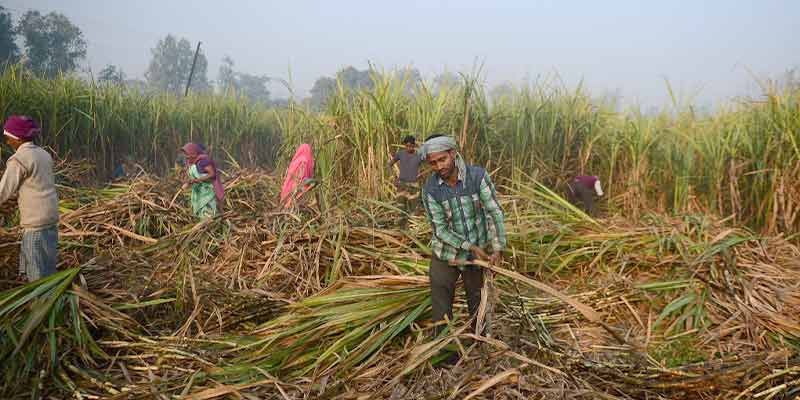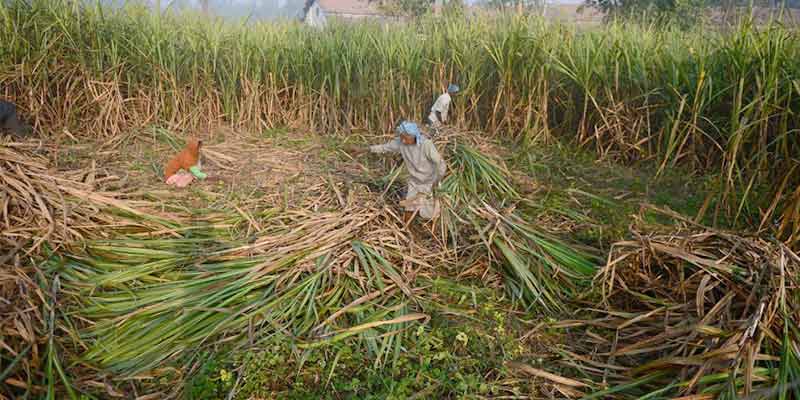- India
- Apr 20
Explainer / India’s sugar exports
• India’s sugar exports increased to $4.6 billion (about Rs 35,000 crore) in 2021-22 from $1.17 billion (about Rs 9,000 crore) in 2013-14.
• India exported sugar to 121 countries across the globe.
• India is the world’s second-largest sugar producer after Brazil.
• The country exported sugar worth $1.96 billion in 2019-20, and $2.79 billion in 2020-21.
• The growth was achieved despite logistical challenges posed by COVID-19 pandemic in the form of high freight rates, container shortages.
• The key markets for the shipment included Indonesia, Bangladesh, Sudan and the UAE.
• The record exports would enable the sugar producers to reduce their stocks and would also benefit the sugarcane farmers, as the increased demand for Indian sugar is likely to improve their realizations.
Rise in sugar production
• The country’s sugar production is projected to rise by 13 per cent to 35 million tonnes in the current sugar season (2021-22).
• Uttar Pradesh, Maharashtra and Karnataka account for nearly 80 per cent of the total sugar production in the country. Other major sugarcane-producing states are Andhra Pradesh, Gujarat, Madhya Pradesh, Odisha, Tamil Nadu, Bihar, Haryana and Punjab.
• Since 2010-11, India has consistently produced surplus sugar, comfortably exceeding the domestic requirements.
• There are 506 operational sugar factories in the country, with sufficient crushing capacity to produce around 350 lakh MT of sugar.
• The capacity is roughly distributed equally between private sector units and co-operative sector units.
• The capacity of sugar mills is, by and large, in the range of 2,500 Tonnes Crushed per Day (TCD) to 5,000 TCD but increasingly expanding and going even beyond 10,000 TCD.
• Three standalone refineries have also been established in the country in the coastal belt of Gujarat, West Bengal and Andhra Pradesh which produce refined sugar mainly from imported raw sugar as also from indigenously produced raw sugar.
Regulations for sugar export
• Sugar is an essential commodity. Its sale, delivery from mills, and distribution were regulated by the government under the Essential Commodities Act, 1955.
• Till January 1997, the exports of sugar were being carried out under the provisions of the Sugar Export Promotion Act, 1958, through the notified export agencies.
• Through an ordinance, the Sugar Export Promotion Act, 1958, was repealed in January 1997 and thus the export of sugar was decanalised.
• Under the decanalised regime, the export of sugar was being carried out through the Agricultural and Processed Food Products Export Development Authority (APEDA), under ministry of commerce & industry.
• Thereafter, the sugar export was undertaken by the various sugar mills/merchant exporters, after obtaining the export release orders from the Directorate of Sugar.
• During the phase of surplus production, the government dispensed with the requirement of export release orders. Thereafter, the export of sugar was made free subject to prior registration of quantity with the Directorate General of Foreign Trade (DGFT).
• Subsequently, in September 2015, the requirement for prior registration (RC) was also dispensed with.
• Presently, export of sugar is free without any quantitative restrictions.
Import duty on sugar
• Sugar production in the sugar season 2008-09 had declined and in order to augment the domestic stock of sugar, the central government allowed import of raw sugar at zero duty under Open General License (OGL) in April 2009 which was applicable till June 2012.
• Thereafter, a moderate duty of 10 per cent was re-imposed in July 2012 which was subsequently increased to 15 per cent in July 2013.
• Due to surplus stocks of sugar in the country and in order to check any possible imports, the government increased the import duty.
• In order to prevent any unnecessary import of sugar and to stabilise the domestic price at a reasonable level, the central government has increased custom duty on import of sugar to 100 per cent in the interest of farmers from February 2018.
Levy Sugar Price Equalisation Fund
• Levy sugar is the sugar bought by the central government from mills to sell through ration shops. Sugar mills are obliged to sell 10 per cent of their production to the government to meet the demand of ration shops.
• The Levy Sugar Price Equalisation Fund Act, 1976 (as amended in 1984) was enacted by the Parliament of India to provide for the establishment, in the public interest, of a Fund to ensure that the price of levy sugar may be uniform throughout India.
• As per the provisions of the Act, the Fund shall be administered by the central government and is to be utilised, having regard to the interest of consumers of levy sugar as a class.
In exercise of powers conferred in the LSPEF Act, 1976, the Levy Sugar Price Equalisation Fund Rule, 1977 were made, to provide for the manner of:
i) Crediting money to the Fund.
ii) Accounting and transactions of the Fund.
iii) Inviting applications from buyers for refund.
iv) Utilization of Fund by the central government, etc.
Sugar Development Fund
• Under the Sugar Cess Act, 1982, a cess was levied and collected as a duty of excise for the purpose of the Sugar Development Fund (SDF) in addition to the excise duty collected on sugar under the Central Excise Act, 1944.
• Sugar Development Fund (SDF) was established in the year 1982, through an act of Parliament.
• The Fund was used for granting loans for facilitating the rehabilitation and modernisation of any sugar factory or any unit thereof or the undertaking of any scheme for development of sugarcane in the area in which any sugar factory is situated.
• The loans were provided at a concessional rate of 2 per cent below the prevailing bank rate.
• The schemes of financial assistance as loans to sugar factories under the Sugar Development Fund Act, 1982 have been closed forthwith. However, the SDF loan cases where Administrative Approval has been issued are being considered by the department.
Manorama Yearbook app is now available on Google Play Store and iOS App Store




